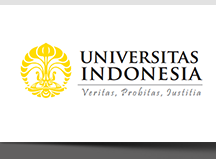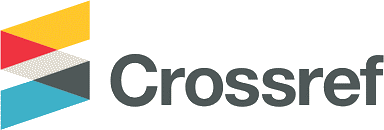Journal of Materials Exploration and Findings
Abstract
Pipeline Shipping Lines X, Y & Z are classified as critical infrastructure, being the only transportation through the crude oil lifting from P and R location to the transfer station in NM Area. To maintain the workflow of the Shipping Line, integrity assessments and risk evaluation are required to ensure the operational and safety. Anomalies were found by analysing inspection, monitoring, and repair data, while the pipelines' future integrity was assessed by calculating the remaining life. Risk-Based Analysis (RBA), which is a modification of Kent Muhlbaeur's method, is employed to conduct the risk assessment using the Probability of Failure (POF) and Consequence of Failure (COF) in order to develop the risk profile. Simulations of pressure built up, temperature drop, and wax deposition are performed through flow assurance analysis to predict the Shipping Line condition. The results of the integrity assessment show that the Shipping Lines X, Y, and Z is fit-for-service. Nevertheless, some concerns need to be addressed, including active internal degradation mechanisms such as Under Deposit Corrosion (UDC) and Microbiologically Induced Corrosion (MIC), as well as active external threats such as Corrosion Under Insulation (CUI). The result of integrity and risk assessment Shipping Lines X, Y, and Z are crucial for planning inspection schedules and maintenance strategies in short, medium, and long term.
References
API 2009, Piping inspection code: in-service inspection, rating, repair, and alteration of piping systems (API 570), 3rd edn, API Publishing Services, Washington, DC.
API 2009, Piping inspection code: in-service inspection, rating, repair, and alteration of piping systems, API Publishing Services, Washington, DC.
API 2011, Damage mechanisms affecting fixed equipment in the refining industry (API RP 571), 2nd edn, API Publishing Services, Washington, DC.
API 2011, Damage mechanisms affecting fixed equipment in the refining industry (API RP 571), 2nd edn, API Publishing Services, Washington, DC.
API 2013, In-line inspection system qualification (API Standard 1163), 2nd edn, API Publishing Services, Washington, DC.
API 2020, Risk-based inspection methodology (API Recommended Practice 581), 3rd edn, Addendum 2, API Publishing Services, Washington, DC.
ASME 2012, ASME B31.G - Manual for determining the remaining strength of corroded pipelines, The American Society of Mechanical Engineers, New York.
ASME 2019, ASME B31.4 - Pipelines transportation system for liquid and slurries, The American Society of Mechanical Engineers, New York.
Bin, Y, Deyin, Z, Zhi, Z & Cheng, H 2021, ‘Safety study on wax deposition in crude oil pipeline’, Processes, vol. 9, no. 9, p. 1572.
Digita FR, Fatriansyah JF, Ridzuan AR, Ovelia H, Mas'ud IA, Tihara IH & Linuwih BDP 2023, Pipeline risk analysis optimization with Monte Carlo method using Gamma distribution, Journal of Materials Exploration and Findings, vol. 2, no. 3, p. 5
DNVGL 2021, DNV-RP-G101: Risk-based inspection of offshore topsides static mechanical equipment, DNVGL, s.l.
ESDM, K 2021, Peraturan Menteri ESDM No 32 Tahun 2021 tentang Inspeksi Teknis dan Pemeriksaan Keselamatan Instalasi dan Peralatan pada Kegiatan Usaha Minyak dan Gas Bumi, Menteri Energi dan Sumber Daya Mineral Republik Indonesia, Jakarta.
Hai, Z, Chen, J, Lin, Y & Guo, J 2024, ‘In-line inspection (ILI) techniques for subsea pipelines: State-of-the-art’, Journal of Marine Science and Engineering, vol. 12, no. 3, p. 417.
Han, W, Yang, L, Chen, F, Zhao, X & Li, S 2024, ‘Flow prediction analysis of shutdown and restart for off-station pipeline based on flow assurance and energy-saving’, Journal of Physics: Conference Series, vol. 2865, no. 1, p. 012038.
Hartoyo, F, Irianti, G P, Fatriansyah, J F, Ovelia, H, Mas' ud, I A, Digita, F R, Fauzi, A & Anis, M 2023, ‘Weibull distribution optimization for piping risk calculation due to uniform corrosion using Monte Carlo method,’ Materials Today: Proceedings, vol. 80, pp.1650-1655.
McAllister, E 2014, Pipeline rules of thumb handbook, 8th edn, Gulf Publishing, s.l.
Muhlbaeur, W 2004, Pipeline risk management manual, 3rd edn, Gulf Publishing, s.l.
NACE 2013, Control of external corrosion on underground or submerged metallic piping systems (SP0169-2013), National Association of Corrosion Engineers (NACE), Houston, TX.
NACE 2017, Control of corrosion under thermal insulation and fireproofing materials—A systems approach (NACE SP0198), NACE, s.l.
Rinaldi R & Fatriansyah JF n.d., A comparative study of conventional and statistically active corrosion methods for corrosion growth assessment of a 24-inch gas pipeline, Journal of Materials Exploration and Findings, vol. 3, no. 3, p. 5
Soomro, A & Ahmed, A 2022, ‘Integrity assessment of corroded oil and gas pipelines using machine learning: A systematic review’, Engineering Failure Analysis, vol. 131, p. 105810.
Wiley 2017, Guidelines for asset integrity management, Center for Chemical Process Safety of the American Institute of Chemical Engineers, New York.
Recommended Citation
Anggraini, Ade Ratih and Nurjaya, Dwi Marta
(2025)
"Integrity Assessment of Shipping Line Pipelines Using Risk-Based Analysis to Determine Risk and Maintenance Strategies,"
Journal of Materials Exploration and Findings: Vol. 4:
Iss.
1, Article 3.
DOI: 10.7454/jmef.v4i1.1086
Available at:
https://scholarhub.ui.ac.id/jmef/vol4/iss1/3
Included in
Materials Science and Engineering Commons, Mechanical Engineering Commons, Operations Research, Systems Engineering and Industrial Engineering Commons, Other Engineering Commons, Risk Analysis Commons










